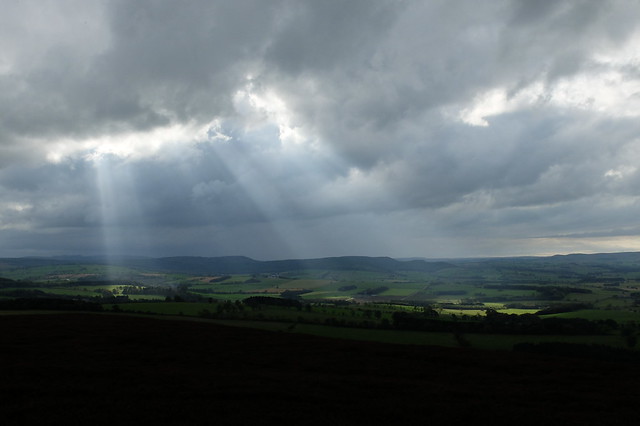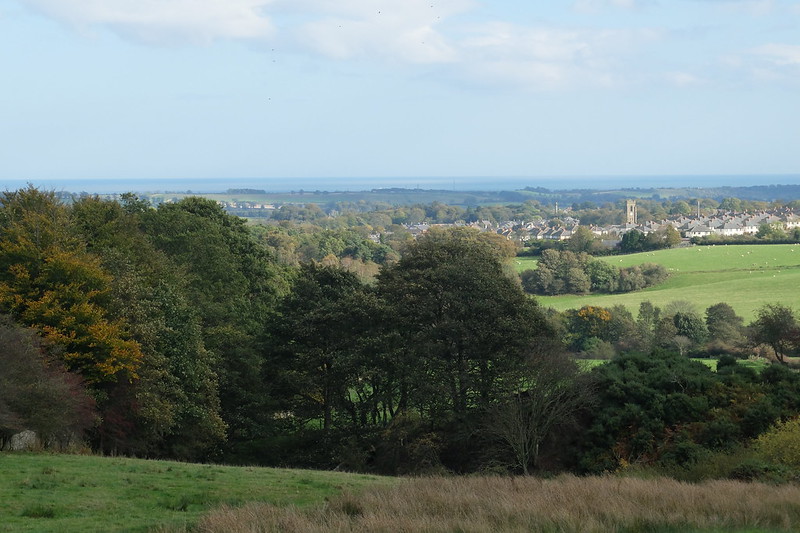At the time it wasn't clear whether the path existed or not. The reason was this.
In the 1850's the Duke wanted to build a new wall around his park. He offered to build the wall 6 feet inside his own land, leaving the land outside as a footpath that anyone could use. Everyone thought this was a good idea, so it went ahead.
A decade went by before people seem to have realised that the new wall blocked an ancient footway, and the Duke hadn't offered to build a footpath: just to make the land available. People felt cheated: they had lost an ancient right of way, without gaining a footpath. There was a bit of argy-bargy, and the path wasn't included in the 1869 survey. Things must have got sorted eventually, because today this counts as a public footpath.
The path follows the wall that the Duke built in 1858. So it couldn't be easier to follow - just by staying close to the wall. The path itself isn't heavily used, or surfaced. But it is used, and fairly easy walking - though there are some muddy bits, and a couple of streams to cross. There are also a few stiles, but they have gaps in the fence that a labrador-sized labrador can get through. We know because we tested them.
As you climb the views east over town to the sea come and go with the roll of the land. There are less interesting views over the moor to the south. On reaching the top the views out to sea disappear, but there are fine views inland to the east and north.
There is also a radar dome which provides long-range early warning and control for the UK Air Surveillance And Control System (ASACS). Basically this warns of intruders into UK airspace. The enclosure, apparently, is home to rabbits, stoats, newts, frogs, birds and sometimes adders.
 It's worth the climb. The top of the hill is called Cloudy Crags. I can't think why. We were particularly lucky with the way the sun was breaking through. The return journey was easier but less impressive. We came back on the road, and the rain started.
It's worth the climb. The top of the hill is called Cloudy Crags. I can't think why. We were particularly lucky with the way the sun was breaking through. The return journey was easier but less impressive. We came back on the road, and the rain started.
There is also a radar dome which provides long-range early warning and control for the UK Air Surveillance And Control System (ASACS). Basically this warns of intruders into UK airspace. The enclosure, apparently, is home to rabbits, stoats, newts, frogs, birds and sometimes adders.
 It's worth the climb. The top of the hill is called Cloudy Crags. I can't think why. We were particularly lucky with the way the sun was breaking through. The return journey was easier but less impressive. We came back on the road, and the rain started.
It's worth the climb. The top of the hill is called Cloudy Crags. I can't think why. We were particularly lucky with the way the sun was breaking through. The return journey was easier but less impressive. We came back on the road, and the rain started. 



